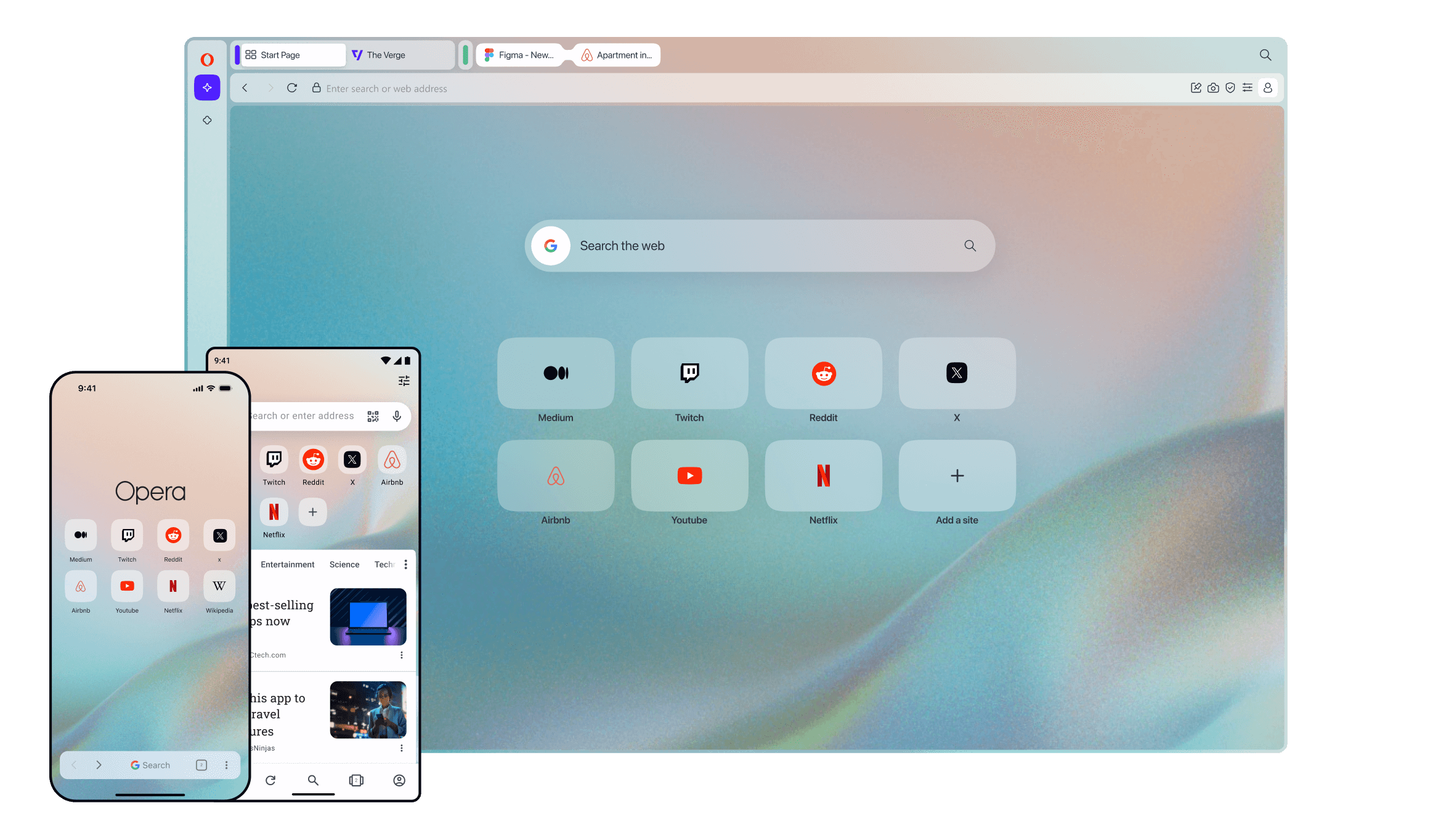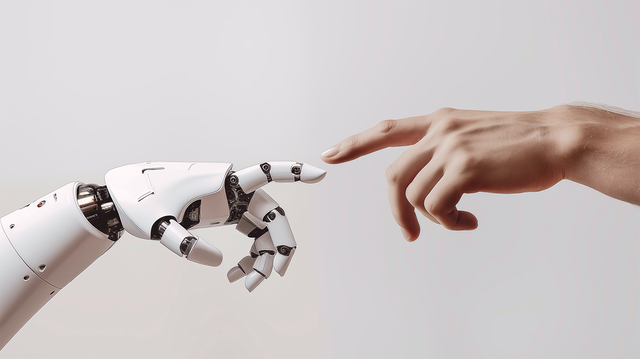Are we in an AI bubble?

In 1999, a 27-year-old graduate student in Stanford’s computer science department sat in front of a clunky CRT monitor and tried to explain to a skeptical venture capitalist why the world needed another search engine. Netscape had already taken the world by storm. Yahoo was the reigning internet directory. And Google, with its strange name and bare-bones interface, seemed more like a research project than a business. We know what happened next. The dot-com boom inflated expectations until they burst, but some companies—Amazon, eBay, Google—built foundations strong enough to outlast the frenzy.
Today, conversations about artificial intelligence carry an uncanny sense of déjà vu. Everyone seems to be talking about it. Startups pitch “AI-powered” everything from grocery shopping to relationship advice. Tech giants roll out new models with the cadence of quarterly product cycles. Governments are racing to regulate, while investors scramble to place bets before the next leap forward. The question lurking in the background is the same one posed two decades ago during the internet’s rise: are we in a bubble?
Defining what a bubble really means
To call something a bubble is not to deny its importance. The internet was never a fad, despite skeptics declaring it one. But bubbles form when excitement and speculation outpace the underlying value being created. In finance, that means asset prices rise faster than the cash flows or profits they can realistically generate. In technology, it means expectations—economic, cultural, even philosophical—soar beyond what the current tools can actually deliver.
Artificial intelligence today is remarkable, but it is not magic. Large language models like GPT-4 or Claude 2 can generate text that feels conversational, summarizing reports or drafting essays in seconds. Image generators can conjure photorealistic landscapes from a single sentence. Recommendation systems quietly shape what we watch, read, and buy. These are genuine advances, rooted in decades of research. But as with all waves of technological enthusiasm, it is worth asking whether the promises now being attached to AI are realistic, or whether we are building castles in the air.
The everyday AI we barely notice
One way to assess whether this moment is frothy is to step back and look at how AI already fits into daily life. Not the dramatic breakthroughs, but the mundane.
Open Netflix, and you are greeted not by a random grid of titles but by rows carefully personalized by algorithms trained on your past choices. When you type into Google Search, autocomplete predicts what you are looking for before you finish typing. Spam filters quietly sweep unwanted emails into a separate folder. These are not glamorous, but they demonstrate how machine learning has been woven into the fabric of our routines.
Ride-sharing apps like Uber and Lyft use AI to predict demand, set dynamic prices, and route drivers efficiently. Google Maps leverages data from millions of phones to estimate traffic patterns in real time. Even Opera, the veteran web browser that pioneered features like tabbed browsing and built-in search, now experiments with AI-driven assistance to summarize webpages or suggest shortcuts. These practical, sometimes invisible uses of AI underscore that the technology has already moved far beyond research labs.


The spectacular promises
Yet the headlines point to something bigger: AI as an epoch-defining transformation. The boldest claims suggest it will rewrite the job market, unlock new forms of creativity, accelerate drug discovery, and perhaps even lead to artificial general intelligence—a system as capable and flexible as a human mind.
Startups promise AI lawyers, AI doctors, AI teachers. Venture capital firms are pouring billions into companies with little more than a prototype and a slide deck. In some circles, AI is spoken of as if it were electricity, a general-purpose force destined to reshape every corner of society. The allure is intoxicating. But it is worth remembering that the dot-com bubble also featured startups claiming they would “revolutionize” industries with little more than a domain name and a vague plan to “monetize traffic.”
The question is not whether AI is important—it clearly is—but whether the scale of current investment and expectation is sustainable.
The money flood
Investment numbers offer one way to gauge the climate. According to CB Insights, global funding for AI startups topped $50 billion in 2023, with some single companies raising billions in a single round. Nvidia, the chipmaker whose GPUs power much of the AI boom, briefly became the world’s most valuable company in mid-2024. The market capitalization of a few leading firms now exceeds the GDP of some countries.
History shows that such surges are not inherently bad. Speculative bubbles often leave behind useful infrastructure: the railroads of the 19th century, the fiber-optic cables of the dot-com boom, the solar farms from the clean-tech wave of the 2000s. Even if many companies fail, the ecosystem they create can accelerate progress. But the danger is that capital and talent flow disproportionately into flashy projects that may never materialize, while steadier, less glamorous work goes underfunded.
Related: Read more about the rapid advancements and applications of AI in The role of AI in the digital revolution.
The bottlenecks beneath the hype
A useful way to test whether enthusiasm is overheating is to look at the bottlenecks: the stubborn, unglamorous obstacles that technology still faces.
First, energy. Training frontier AI models requires staggering amounts of electricity. A single training run of a state-of-the-art model can consume as much energy as several hundred American households use in a year. Data centers are expanding rapidly, putting pressure on power grids and raising questions about sustainability.
Second, data. Many large language models are trained on vast swaths of text scraped from the internet. But the web is finite, and researchers warn that high-quality training data may soon be exhausted. Without new sources or more efficient methods, future improvements may be harder to come by.
Third, reliability. Despite their fluency, AI systems are prone to “hallucinations”—producing confident but false answers. In domains like medicine, law, or scientific research, such mistakes are not amusing quirks but serious risks. Fixing them is not as simple as patching a bug; it requires deeper advances in how these systems reason and verify information.
These challenges suggest that while AI is advancing rapidly, it is not on a frictionless trajectory toward omniscience. The hype sometimes papers over the limits.
Historical echoes
Comparisons to past bubbles are inevitable. The dot-com bubble of the late 1990s saw a frenzy of internet startups, many of which collapsed when investors realized their business models were unsustainable. Yet from that rubble emerged enduring companies and a reshaped global economy.
Earlier still, the “AI winters” of the 1970s and 1980s saw funding dry up after early optimism about symbolic reasoning and expert systems failed to meet expectations. Those cycles left scars, but they also taught researchers to be more cautious about overpromising.
The key lesson is not that bubbles are all bad, but that they can distort perception. They create a fog in which it becomes harder to distinguish between genuine breakthroughs and speculative fluff.


The human factor
Technology is never just about hardware or algorithms. It is about people—how we adapt, how we adopt, and how we set limits.
Consider workplaces. Tools like ChatGPT or GitHub Copilot can speed up writing or coding, but they do not replace the need for judgment, context, or creativity. The gains are real, but they are uneven. Some jobs may be automated, others augmented, and many transformed in ways that are hard to predict. Hype about mass replacement often overlooks the messy, incremental reality of how technology changes work.
Education offers another lens. AI tutors promise personalized learning, but the challenge is not simply delivering explanations. It is motivating students, nurturing curiosity, and building critical thinking—tasks that depend as much on human connection as on information transfer. A bubble narrative that reduces teaching to “content delivery” risks misunderstanding the problem.
And then there are cultural questions: whose values shape AI, whose languages are prioritized, whose data is used. These questions cannot be answered by technical progress alone.
Regulation and reality checks
Governments are scrambling to respond. The European Union passed its AI Act in 2024, setting rules for how high-risk applications must be tested and disclosed. The United States, so far more cautious, has leaned on voluntary commitments from major companies. China is imposing its own guardrails, focused on controlling information flows.
Regulation may act as a counterweight to hype, forcing companies to confront risks more directly. But it can also be uneven, sometimes lagging behind technological change and sometimes overcorrecting. Either way, the involvement of regulators suggests that AI is no longer just a playground for technologists. It is a matter of public policy, which often serves as a reality check on bubble dynamics.
The role of skepticism
Healthy skepticism is not the same as cynicism. To acknowledge the possibility of a bubble is not to dismiss AI as worthless. It is to recognize that human excitement, fear, and greed often exaggerate technology’s trajectory.
In 2000, Nobel laureate Paul Krugman famously predicted that the internet’s economic impact would be no greater than that of the fax machine. He was wrong, spectacularly so. But so were the countless analysts who thought Pets.com was the future. Skepticism helps us see both sides more clearly.
Are we in a bubble?
So, are we in an AI bubble? The answer depends on how one defines it.
If a bubble means excessive investment chasing uncertain business models, then yes, there are strong signs. Billions are flowing into projects that may never generate revenue. Valuations of chipmakers and AI startups are stretched to levels that assume flawless growth.
If a bubble means the entire phenomenon is hollow, then no. AI is already deeply embedded in daily life, from navigation apps to fraud detection to personal assistants. The underlying advances are real and likely to persist.
Perhaps the more useful question is not whether we are in a bubble, but what kind of bubble this is. Is it a tulip mania, destined to collapse entirely, or an internet bubble, painful but ultimately transformative? History suggests the latter. There will be failures, disillusionment, and perhaps another AI winter. But the foundations—data infrastructure, chips, algorithms, and applications—are too substantial to vanish.
The grounded takeaway
The risk is not that AI is irrelevant, but that inflated expectations could lead to backlash. If people are promised flawless AI doctors and instead get buggy chatbots, trust erodes. If billions are spent on speculative ventures while more practical uses are neglected, progress slows. The task is to balance ambition with realism.
AI is powerful, but it is not destiny. It will not save or doom us on its own. Its trajectory will be shaped by choices: where we invest, how we regulate, and how we integrate it into society. The challenge is to see past the bubble talk and focus on building systems that are reliable, equitable, and genuinely useful.


The best advice may be to remember both the dot-com bust and what came after. A bubble can burst, but the world that follows can still be remade. AI may be overhyped today, but it is also laying foundations for a future we will all live in. The question is not just whether we are in a bubble, but how wisely we use the air inside it.
Related articles
您值得拥有更好的浏览器


Press Contacts!
Our press team loves working with journalists from around the world. If you’re a member of the media and would like to talk, please get in touch with us by sending an email to one of our team members or to press-team@opera.com



